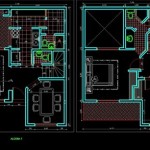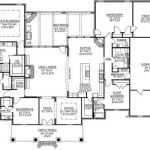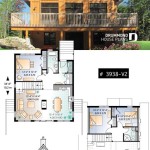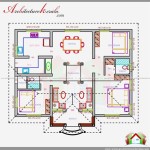How to Design Your Own Home Plan: A Comprehensive Guide
Designing your own home plan can be an exciting and empowering endeavor, allowing you to create a space that perfectly reflects your needs, style, and aspirations. While it may seem like a daunting task, breaking it down into manageable steps can make the process more approachable and enjoyable.
This comprehensive guide will walk you through the essential aspects of designing your own home plan, from gathering inspiration and determining your needs to creating the blueprints and securing permits. By following these steps carefully, you can embark on the journey of creating the perfect home for yourself and your loved ones.
1. Gather Inspiration and Define Your Needs
Before you begin designing, it's crucial to gather inspiration and define your specific needs. Browse home design magazines, websites, and Pinterest boards to identify styles, features, and layouts that you find appealing. Consider your lifestyle, family size, and future plans when determining your requirements.
2. Create a Floor Plan
The floor plan is the blueprint of your home, outlining the layout of the rooms, hallways, and other spaces. Start by sketching out a rough draft on paper or using online floor plan software. Consider the flow of traffic, the placement of windows and doors for natural light, and the overall functionality of the space.
3. Design the Exterior
The exterior of your home sets the tone for the overall design. Choose a style that complements your neighborhood and your personal preferences. Consider the materials you want to use for siding, roofing, and trim. Don't forget to incorporate outdoor living spaces such as patios or decks.
4. Create the Elevations
Elevations are drawings that show the exterior of your home from different sides. They provide a clear understanding of the roof pitch, window sizes, and details such as dormers and chimneys. Draw or create digital elevations to help you visualize the finished product.
5. Design the Interior
Designing the interior involves selecting finishes, fixtures, and furnishings. Create a mood board for each room to visualize the color scheme, lighting, and overall atmosphere you desire. Consider the functionality of each space and ensure that your design choices complement the overall floor plan.
6. Create Blueprints and Specifications
Blueprints are detailed technical drawings that provide contractors with precise instructions for building your home. They include dimensions, materials, and construction details. Specifications provide additional written instructions and clarifications to ensure accurate construction.
7. Secure Permits and Approvals
Before construction can begin, you will need to obtain permits from local authorities. Submit your blueprints and other required documentation to the building department for review and approval. This process ensures that your home meets building codes and zoning regulations.
Conclusion
Designing your own home plan is a rewarding journey that allows you to create a space that is uniquely yours. By following these essential steps and seeking professional guidance when necessary, you can transform your vision into reality. Remember to take your time, gather inspiration, and carefully consider your needs to create a home that reflects your style and enhances your life.
House Plans How To Design Your Home Plan
House Plans How To Design Your Home Plan
Floor Plan Creator And Designer Free Easy App
House Plans How To Design Your Home Plan
House Plans How To Design Your Home Plan
Design Your Own Home House Designing Homes
House Plans How To Design Your Home Plan
House Plans How To Design Your Home Plan
Floor Plans Learn How To Design And Plan
House Plans How To Design Your Home Plan








